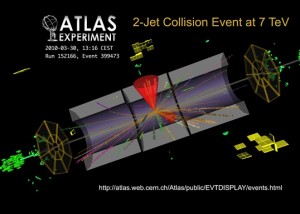This post is for Standard Grade and Intermediate 2.
Here we consider an object closer than one focal length. You will see that it is not possible to obtain a real image when the object is this close to the lens. On a ray diagram, a real image is one that is found on the other side of the lens from the object.
Real images can always be displayed on a screen – a projector in the cinema or classroom produces a real image. If you are doing an experiment, you can check to see if an image is real using a piece of paper. Move your sheet of paper closer to and further from the lens – if you can’t get an image to form on the paper then the image must be virtual. When we look at an object up close through a magnifying glass, we see a virtual image.
ray diagram for objects closer than 1f from mr mackenzie on Vimeo.




